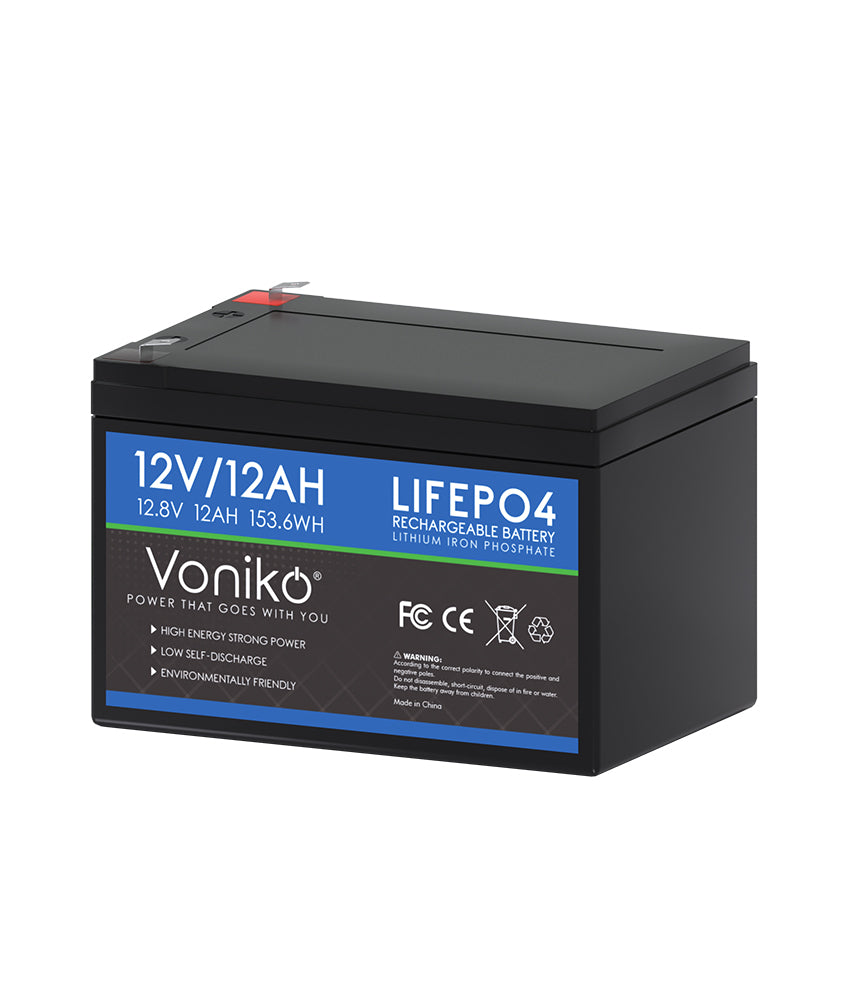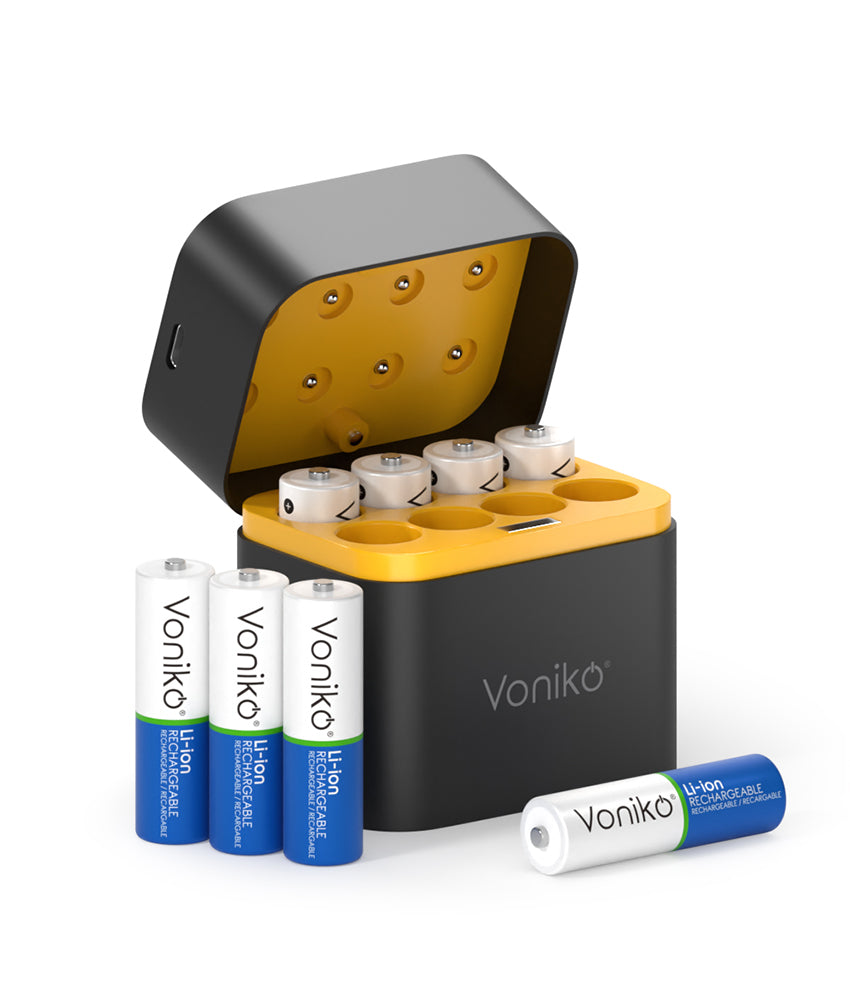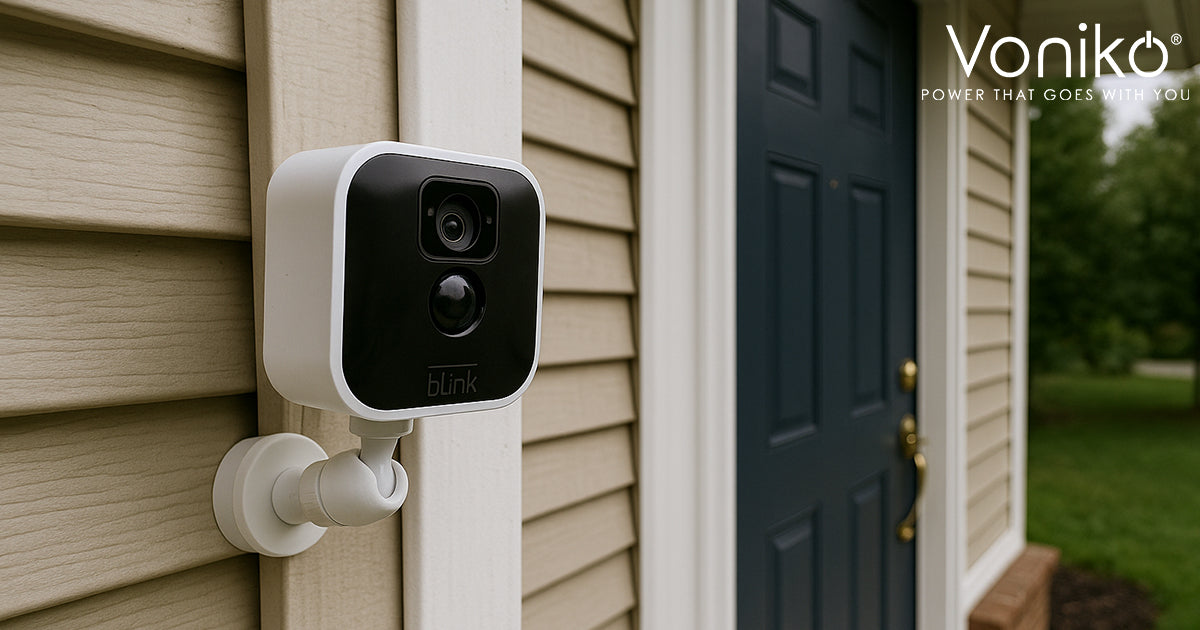Choosing the right security camera system can feel overwhelming with all the options out there. You want something that actually works, doesn't break the bank, and won't require a PhD in technology to set up. That's where Blink cameras come in – they've become one of the most popular choices for homeowners who want reliable security without the hassle.
We've helped thousands of customers power their security systems with our premium batteries, and we've learned a thing or two about what makes a great security setup. Whether you're protecting a small apartment or a large family home, this guide will help you navigate the world of Blink cameras and make the right choice for your specific needs.
At Voniko, we believe that great security starts with reliable power. While we'll cover all aspects of choosing Blink cameras, we'll also share insights on keeping them running smoothly with the right battery solutions that won't let you down when you need them most.
Blink Camera Models and Features
Blink offers several camera models, each designed for different situations and budgets. The main lineup includes the Blink Mini, Blink Indoor, Blink Outdoor, and the newer Blink XT2. Understanding the differences between these models is crucial for making the right choice for your home.
The Blink Mini is the most budget-friendly option, but it requires a constant power connection since it plugs into the wall. This makes it perfect for indoor use where you have easy access to outlets, but it's not suitable for outdoor installations or areas without nearby power sources. Despite being the entry-level model, it still offers 1080p HD video, two-way audio, and motion detection.
For wireless flexibility, the Blink Indoor and Outdoor cameras run on AA batteries and can be placed virtually anywhere. The Indoor model is designed for protected environments, while the Outdoor version offers weather resistance and can handle temperature extremes. Both models provide up to two years of battery life under normal usage conditions.
Key differences at a glance:
- Blink Mini: Plug-in power, indoor only, most affordable
- Blink Indoor: Battery-powered, indoor use, wireless freedom
- Blink Outdoor: Battery-powered, weatherproof, versatile placement
- Blink XT2: Previous generation, still available, proven reliability
The newer models also include features like local storage options, improved night vision, and better integration with smart home systems. Consider which features matter most to your security needs before making your decision.
Indoor vs. Outdoor Blink Cameras: Which Do You Need?
The choice between indoor and outdoor Blink cameras depends on where you plan to install them and what kind of protection you need. While this might seem obvious, many people underestimate the challenges that outdoor cameras face and end up disappointed with their choice.
Indoor cameras are perfect for monitoring inside your home, but they're not built to handle moisture, extreme temperatures, or direct sunlight. If you try to use an indoor camera outside, even under a covered porch, you're likely to run into problems with condensation, temperature-related failures, or premature battery drain.
Outdoor cameras cost a bit more, but they're engineered to handle whatever Mother Nature throws at them. They have better seals against moisture, improved temperature tolerance, and more robust construction. If there's any chance your camera might face outdoor conditions, go with the outdoor model – it's worth the extra investment.
Choose indoor cameras when:
- Monitoring inside your home only
- You have consistent temperatures
- No exposure to moisture or humidity
- Easy access for battery changes
Choose outdoor cameras when:
- Installing anywhere outside
- Monitoring garages, sheds, or covered areas
- Dealing with temperature extremes
- Need maximum durability and reliability
Remember that outdoor cameras work perfectly fine indoors too, so if you're unsure about your installation location or might want to move cameras later, the outdoor model gives you more flexibility.
Battery Life and Power Considerations
Battery life is probably the most important factor that people overlook when buying Blink cameras. Nothing's more frustrating than having your security camera die right when you need it most, and understanding power requirements upfront can save you a lot of headaches later.
Most battery-powered Blink cameras use two AA batteries and can last anywhere from 6 months to 2 years, depending on usage patterns and battery quality. However, these estimates assume ideal conditions and moderate usage. If you have a high-traffic area that triggers frequent recordings, or if you use live view often, expect significantly shorter battery life.
Cold weather is the biggest enemy of battery life. Standard alkaline batteries can lose up to 50% of their capacity when temperatures drop below freezing, which means your outdoor cameras might need battery changes much more frequently during winter months. This is where upgrading to lithium batteries makes a huge difference – they maintain consistent performance even in extreme cold.
Factors that affect battery life:
- Recording frequency: More motion triggers = shorter battery life
- Temperature extremes: Cold weather dramatically reduces capacity
- Wi-Fi signal strength: Weak signals force cameras to work harder
- Live view usage: Streaming video drains batteries quickly
- Motion sensitivity settings: Higher sensitivity = more recordings
Planning for battery replacements is crucial. Stock up on high-quality AA batteries before you need them, and consider setting calendar reminders to check battery levels regularly. It's much easier to replace batteries proactively than to deal with dead cameras during an emergency.
Video Quality and Storage Options
Video quality has improved dramatically in recent Blink camera generations, but understanding your storage options is just as important as picture clarity. Most current Blink cameras record in 1080p HD, which provides clear footage for identifying faces and license plates under good lighting conditions.
However, video quality isn't just about resolution. Factors like field of view, night vision capabilities, and image stabilization all affect how useful your footage will be. Blink cameras typically offer a 110-degree field of view, which covers most doorways and room entrances effectively without creating too much distortion at the edges.
Storage is where things get interesting with Blink cameras. You have several options, each with different costs and benefits. The basic Blink plan includes limited cloud storage, but you can upgrade to plans that offer more storage time and additional features. Alternatively, some models support local storage through USB drives connected to the sync module.
Storage options explained:
- Basic cloud storage: Limited free storage with clips
- Blink subscription plans: Extended cloud storage and features
- Local storage: USB drive connected to sync module
- Hybrid approach: Combination of cloud and local storage
Consider how long you want to keep recordings and whether you need remote access to footage. Cloud storage is convenient for accessing videos from anywhere, but local storage gives you complete control and no ongoing monthly fees.
Smart Home Integration and App Features
Modern security cameras should work seamlessly with your existing smart home setup, and Blink cameras offer solid integration options with popular platforms. If you're already invested in Amazon's ecosystem, you'll appreciate the native Alexa integration that lets you view camera feeds on Echo Show devices.
The Blink mobile app is where you'll spend most of your time managing your cameras, and fortunately, it's pretty user-friendly. You can arm and disarm your system, view live feeds, adjust settings, and receive notifications all from your phone. The app also lets you create custom motion zones, schedule recording times, and share access with family members.
One standout feature is the ability to customize motion detection sensitivity and zones. This helps reduce false alarms from things like passing cars, moving shadows, or neighborhood cats. You can fine-tune each camera individually based on its specific location and what you want to monitor.
Key app features:
- Live view streaming: Check cameras in real-time
- Motion zone customization: Focus on specific areas
- Scheduling: Set when cameras are active
- Two-way audio: Communicate through selected models
- Multi-user access: Share with family members
- Push notifications: Instant alerts on your phone
The app also provides battery level monitoring, which is crucial for maintaining your security system. You'll get notifications when batteries are running low, giving you time to plan replacements before cameras go offline.
Installation and Setup Requirements
One of Blink's biggest selling points is how easy they are to install and set up. Most people can get their first camera running in under 15 minutes, even if they're not particularly tech-savvy. However, there are some requirements and considerations that can make the process even smoother.
You'll need a reliable Wi-Fi network that reaches wherever you want to install cameras. Blink cameras connect to a sync module, which then connects to your router, so signal strength at the sync module location is more important than signal strength at each individual camera location. The sync module can communicate with cameras up to 100 feet away under ideal conditions.
Camera placement is crucial for both security effectiveness and battery life. You want cameras high enough to avoid tampering but not so high that you can't reach them for battery changes. For outdoor cameras, try to find locations that offer some protection from direct sunlight and extreme weather while still providing good coverage of your target area.
Installation tips for success:
- Test Wi-Fi signal strength before finalizing camera locations
- Use the included mounting hardware for secure installation
- Consider seasonal changes in foliage and lighting
- Plan for easy battery access during placement
- Start with one camera to test your setup before buying more
The sync module needs to be plugged into power and connected to your router via Ethernet cable, so factor this into your installation planning. Some users install the sync module in a central location like a utility room or home office where it won't be disturbed.
Security and Privacy Features
When you're installing security cameras around your home, privacy and data security should be top priorities. Blink takes security seriously with end-to-end encryption for all video streams and storage, but understanding these features helps you make informed decisions about your setup.
All communication between your cameras, sync module, and Blink's servers is encrypted, which means even if someone intercepts the signal, they can't view your footage. Your videos are stored securely in the cloud with multiple layers of protection, and you control who has access to your account and footage.
You also have granular control over when cameras are active and recording. The scheduling features let you automatically arm and disarm cameras based on your routine, and geofencing can automatically adjust settings when you're home or away. This helps balance security needs with privacy concerns.
Privacy controls include:
- Manual arm/disarm: Full control over when cameras record
- Scheduling: Automatic activation based on time
- Geofencing: Location-based automation
- Motion zones: Limit recording to specific areas
- Shared access management: Control who can view footage
Two-factor authentication adds an extra layer of security to your account, and we strongly recommend enabling this feature. It prevents unauthorized access even if someone obtains your password, giving you peace of mind that your security system is truly secure.
Cost Analysis: Upfront vs. Ongoing Expenses
Understanding the true cost of a Blink camera system goes beyond the initial purchase price. While Blink cameras are competitively priced, you need to factor in ongoing expenses like batteries, cloud storage subscriptions, and potential accessories to get an accurate picture of your investment.
The upfront costs include cameras, sync modules, and any mounting accessories you might need. Blink often offers bundle deals that include multiple cameras and sync modules at discounted prices, which can provide significant savings if you're planning a multi-camera setup.
Ongoing costs include battery replacements and cloud storage subscriptions if you want extended storage capabilities. Battery costs can add up over time, especially if you choose cheaper alkaline batteries that need frequent replacement. Investing in high-quality lithium batteries upfront actually saves money in the long run through extended life and better cold weather performance.
Typical cost breakdown:
- Camera units: $35-100 per camera depending on model
- Sync module: Usually included or $35 separately
- Mounting accessories: $10-25 per camera
- Battery replacements: $15-30 per year per camera
- Cloud storage: $3-10 per month depending on plan
Consider starting with a smaller system and expanding over time. This lets you test the system in your specific environment and understand your actual needs before making a larger investment. Many users find that 2-3 strategically placed cameras provide excellent coverage without breaking the budget.
Common Mistakes to Avoid When Buying Blink Cameras
Even with all the research in the world, it's easy to make mistakes when setting up a security camera system. Learning from others' experiences can save you time, money, and frustration as you build your own Blink camera setup.
One of the biggest mistakes is underestimating how many cameras you actually need. It's tempting to start with just one camera to test things out, but single cameras often leave significant blind spots in your coverage. On the flip side, some people go overboard and install cameras everywhere, which creates more maintenance work and higher costs without necessarily improving security.
Another common error is choosing the wrong battery type or buying cheap batteries to save money. Your security system is only as reliable as its power source, and trying to save a few dollars on batteries often leads to cameras failing when you need them most. Stick with high-quality alkaline or lithium batteries from reputable brands.
Mistakes that cost time and money:
- Poor camera placement that creates blind spots or maintenance difficulties
- Ignoring Wi-Fi signal strength requirements during planning
- Buying inadequate battery supplies or choosing low-quality batteries
- Skipping the subscription and losing important footage due to limited storage
- Not testing the system thoroughly before relying on it for security
Take time to walk around your property and identify the most important areas to monitor. Think about common entry points, valuable items, and areas where suspicious activity might occur. This helps you place cameras strategically rather than randomly, maximizing your security coverage while minimizing the number of cameras needed.
Your home security deserves reliable power that won't let you down when it matters most. Whether you're just starting with your first Blink camera or expanding an existing system, choosing quality components – especially reliable batteries – ensures your investment protects your family for years to come. Remember, the best security system is one that works consistently, and that starts with never compromising on the power source that keeps it running.




















